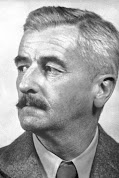All religions have also been co-opted as only tools to further these ends, as most of the deities worshipped are believed to have the power of granting our desires for these ultimate goals & not because of love of God. The penances undergone willingly in Hinduism, (fasting & pilgrimages), Christianity (Lent) & Islam (Ramzan) are also towards the same ends.
The religious leaders of mainstream mathas, churches & mosques are also most active in securing worldly benefits to their followers like reservations in jobs (like politicians) rather than providing spiritual guidance, which is the real duty of the swamijis, pastors or mullahs. These social "duties" have taken precedence over real spiritual duties to such an extent that they are taken for granted as the only function of the said swamijis et.al.!
Even so-called enjoyment of "entertainments" has been perverted by this twisted mentality. Rather than enjoying a film, how much money it has made, has become the viewers' prime interest! The obsession with "net worth" of individuals is appalling.
The only silver lining in the cloud of religiosity is the currently marginalised mysticism in all religions, which preaches the impermanence of worldly delights & the permanent love of God.

.JPEG)








































